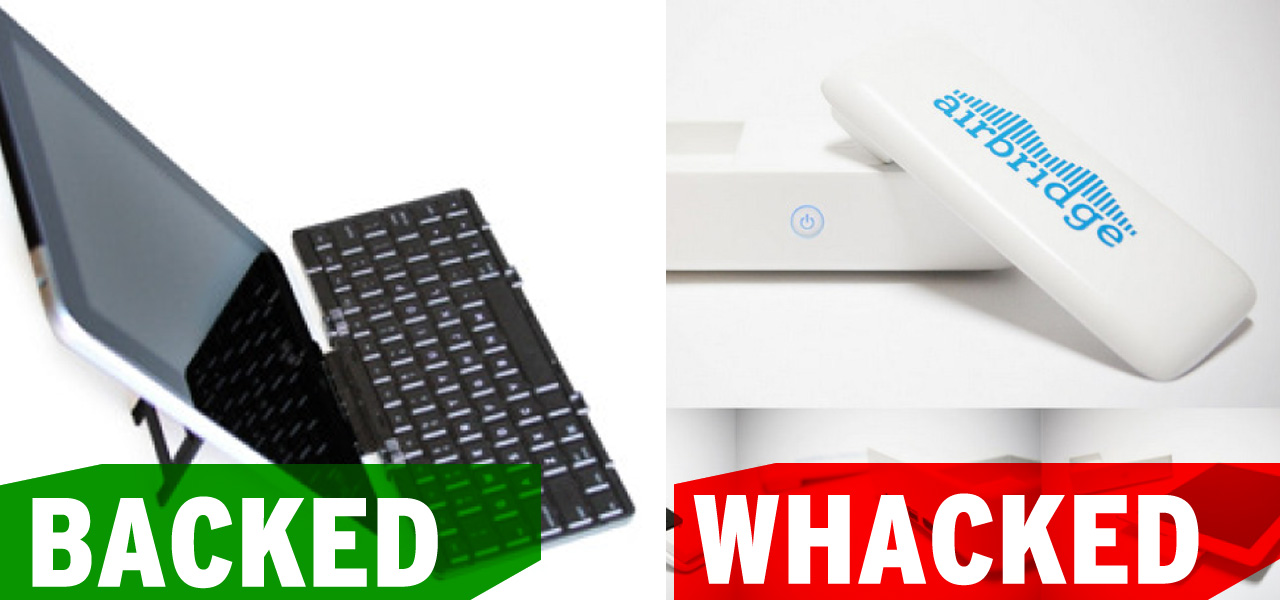Editor’s note: This weekend we’re running a new column called Backed or Whacked by Ross Rubin, principal analyst at Reticle Research, focusing on consumer technologies, and writer for Engadget. Every week he’ll address two crowdsourced projects from the view of an investor, analyst, and gadget fiend. He’ll look at what made one a success and the other, well, a whack.
Cloud-connected smartphones and tablets have become vast repositories of our information. Still, there’s more to be done to facilitate getting data into and out of them, at least according to a couple of Kickstarter projects having different degrees of success.
Backed: Jorno keyboard
Foldable keyboards saw a modicum of popularity during the heyday of the Palm V and the clever Stowaway keyboard. Curiously, though, they haven’t made much of a comeback, even as smartphones have become ridiculously popular though frustrating to use for entering large quantities of text. After a warm reception at CES 2011, the Jorno keyboard seemed to be the modern-day cure for frustrated thumbs, but repeated delays led to an apparent cancellation earlier this year before it popped up on Kickstarter.
The Jorno keyboard is a bit thick at an inch of girth but folds into a pocketable square. That includes a detachable stand that can accommodate a 7″, or perhaps larger, tablet — including the rumored miniature iPad, particularly since rumors don’t take up any room. With its ability to accommodate smartphones and tablets of nearly every stripe, the Jorno is well on its way to meeting its funding goal, which should allow it to finally enter mass production.
Whacked: AirBridge
If the lack of a keyboard is one of the main input hindrances of a smartphone, the size of the display is one of the main output limitations, especially for content designed for group viewing such as movies or presentations. Many phones can wirelessly connect with a DLNA-enabled TV or AV component. For iPhones, however, the Apple-supplied solution is AirPlay to an Apple TV.
AirBridge has a few advantages over Apple TV. In addition to being battery-powered, its Pro version can create a Wi-Fi hotspot that allows someone to send a presentation to the screens of other iOS devices running AirBridge’s app and even send files to them, kind of like a conference room version of WebEx or GoToMyPC. These advantages may have marginal relevance to a lot of folks versus the stock Apple TV, particularly since the AirBridge relies on its own radio technology for screen broadcasting that requires the addition of an adapter into the iPhone’s dock (or potentially Lightning) connector.
But ambition will be the main reason AirBridge will miss its funding goal; the team is asking for half a million dollars. Such a sum, while not unjustifiable, is simply atypical for product design products. For example, the CruxCase add-on keyboard for iPad has met 250 percent of its goal, but has collected less than $250,000, whereas the Touch Time, an e-paper watch created by Donald Brewer, former CTO of Fossil Watches, raked in over $314,000. And so the team behind AirBridge will need to float another campaign or find alternative funding. At least it can use the prototypes in investor pitch meetings.

